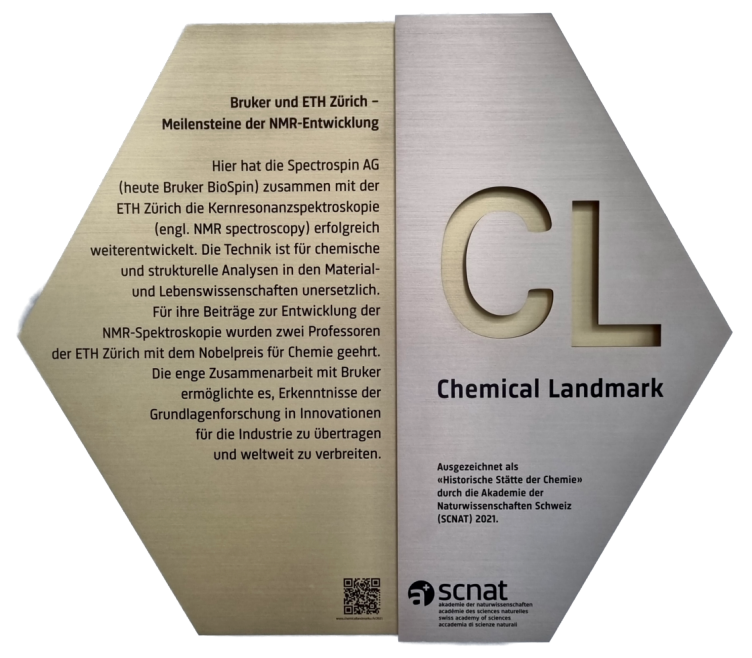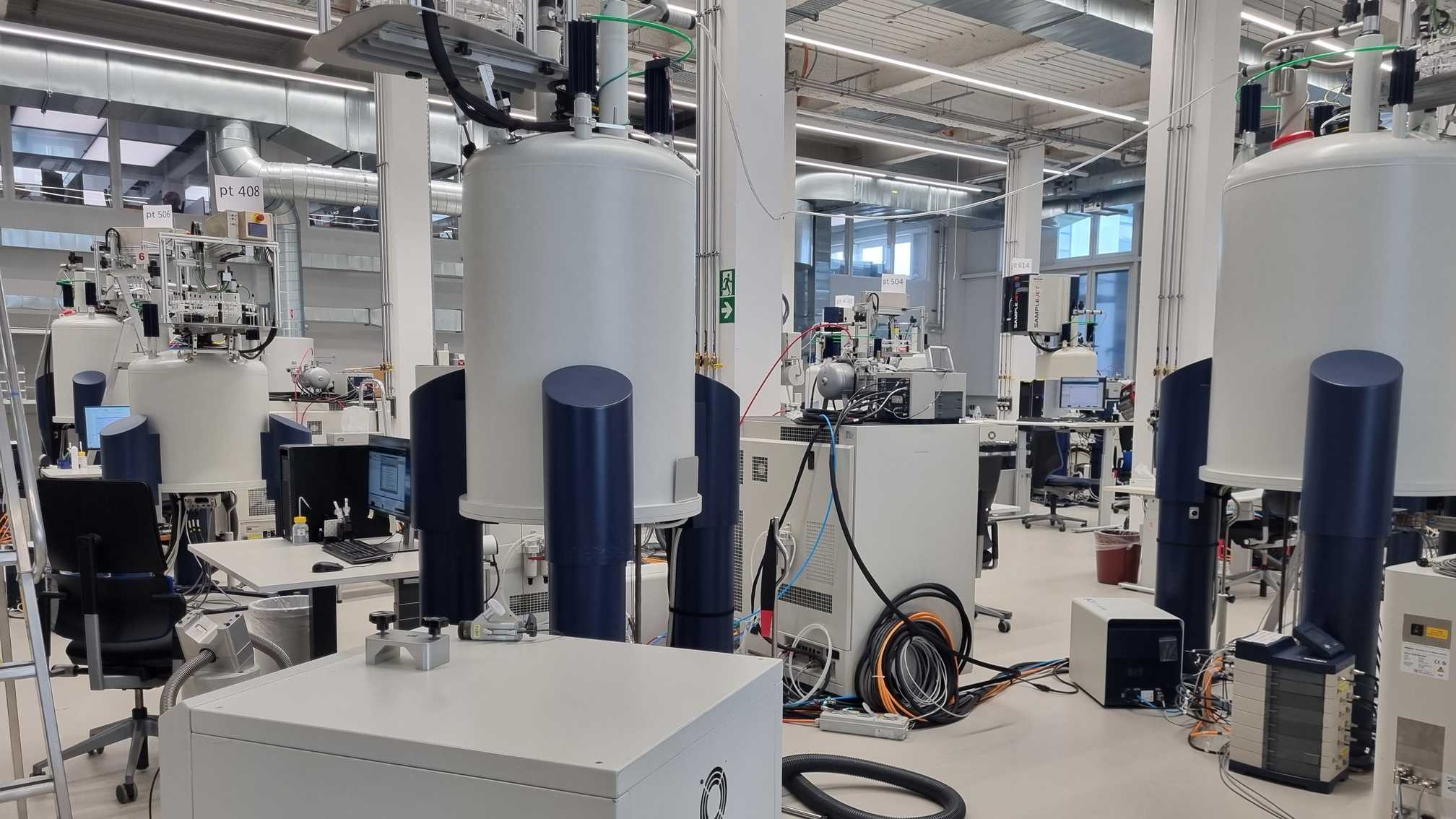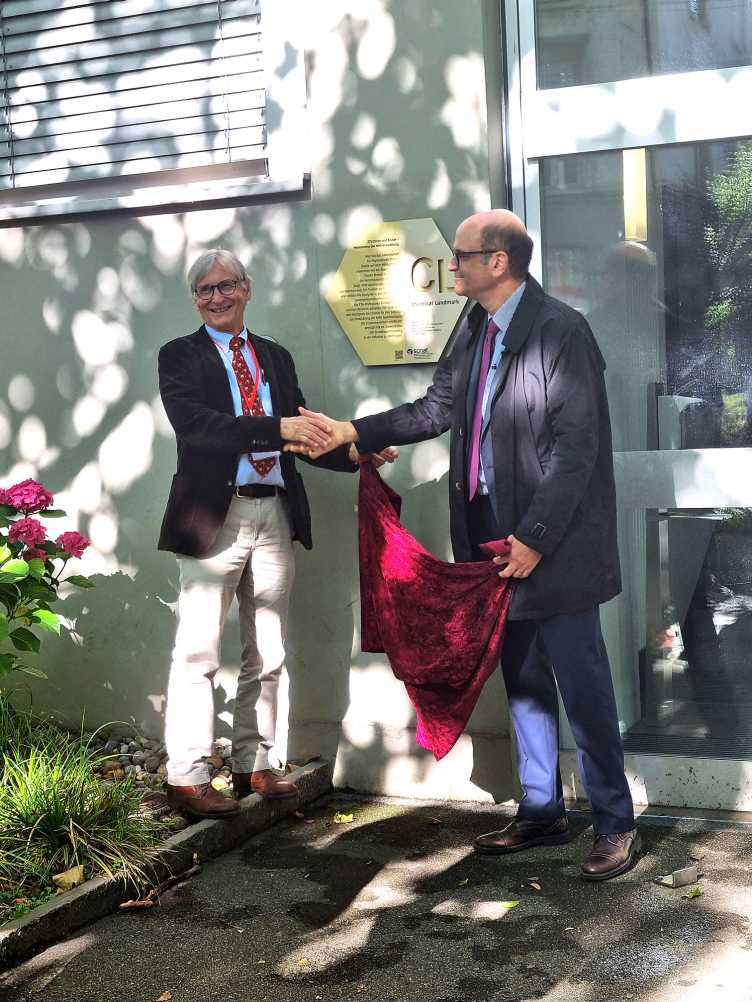
Second Chemical Landmark for ETH Zurich
Two historic sites of the Bruker company and ETH Zurich were honored by the Swiss Academy of Sciences on July 1, 2022.
Switzerland owes much of its prosperity to discoveries and successes in chemical research. Since 2009, the Chemistry Platform of the Swiss Academy of Sciences (SCNAT) has been honoring significant places in the history of chemistry as “Historical Sites of Chemistry”. These Chemical Landmarks are intended to remind researchers, teachers and students as well as historians and the general public of significant chemical discoveries, famous chemists and their places of activity.
Each year, a jury from SCNAT selects a historic site to be honored with an official ceremony.
In 2010, the former chemistry building CAB of ETH Zurich at Universitätstrasse 6 was honored as a Chemical Landmark. This was the workplace of several generations of chemists and chemical engineers.

With the Chemical Landmark 2021, the Swiss Academy of Sciences now honors Industriestrasse 26 in Fällanden and Universitätstrasse 22 in Zurich. At these locations, the Bruker company and ETH Zurich wrote research history by jointly contributing significantly to the development of nuclear magnetic resonance (NMR) spectroscopy. In addition to the various technical milestones, the Chemical Landmark jury highlights the successful long-term cooperation between industry and academia. The collaboration with Bruker enabled the scientists from ETH Zurich to transfer findings from basic research to industry.
NMR spectroscopy is irreplaceable today in chemistry, materials science, biology and medicine. Thanks to it, the three-dimensional structures and reactions of atoms, molecules, liquids and solids can be studied. More about the background of this method and its development will be published in a second article and a podcast with two NMR experts from ETH Zurich.
Due to Corona, the official ceremony during which the plaques on the buildings were unveiled could not take place until 2022. After the unveiling of the commemorative plaque on the building at Industriestrasse 26 in Fällanden, the headquarters of Bruker Switzerland, and a tour of the factory facilities, the ceremony took place at ETH Zurich. The welcoming addresses by the President of the Swiss Academy of Sciences, Prof. Philippe Moreillon, and by the host, the Head of the Department of Chemistry and Applied Biosciences, Prof. Erick Carreira, was followed by the ceremonial speeches. Dr. Anne Lesage, CRMN Lyon, showed the diversity of today’s applications of NMR spectroscopy in her talk The Structure of Surfaces from DNP Enhanced Solid-State NMR: A Historical Perspective. Prof. Dr. Christian Griesinger of the Max Planck Institute for Biophysical Chemistry in Göttingen complemented these in his lecture Historic Perspectives and Some Modern Applications with further applications and remarks on the development of NMR spectroscopy and the emergence of Silicon Valley in California. The entertaining closing lecture was given by Dr. Rainer Kümmerle, Bruker AG, who illustrated the development of NMR spectroscopy with many historical pictures.

Bruker entered the development of NMR spectroscopes in 1965 with the company Spectrospin. Soon after, it presented the first spectroscope whose electronics were made entirely of transistors, like today’s computers.
In the mid-1970s, the company began to collaborate with Richard Ernst of ETH Zurich. The chemist and the industrial company brought the so-called Fourier transform spectrometer to market maturity. Compared to conventional NMR spectrometers, it allows for better resolution and shorter measurement times and was a milestone in chemical analysis. Ernst was awarded the Nobel Prize in Chemistry in 1991 for his research into high-resolution NMR methods.
With Kurt Wüthrich, a second ETH chemist joined the team. He achieved another milestone: thanks to 2D NMR spectroscopy, it was now possible not only to break down the chemical composition of substances, but also to measure the distances between the individual atoms. This made it possible to analyze the structure of complex molecules. In 2002, Wüthrich also received the Nobel Prize in Chemistry for his work on the structural elucidation of proteins.

After the lectures, visitors made their way to the entrance of the building at Universitätstrasse 22, where Erick Carreira and Philippe Moreillon jointly unveiled the plaque.
Another Chemical Landmark will be honored in 2022. The location has already been determined by the jury of the Platform Chemistry of the Swiss Academy of Sciences, and the announcement and ceremonial unveiling of the plaque will take place in late 2022 or early 2023.